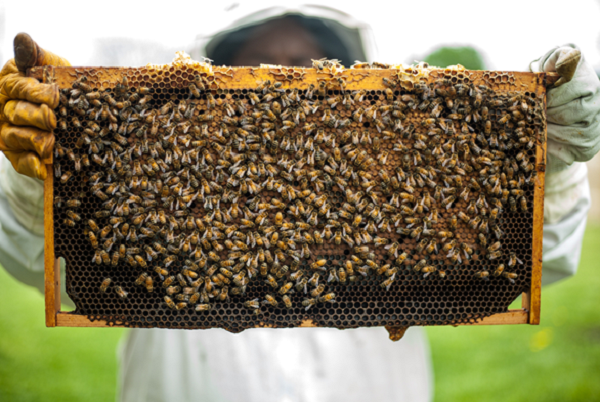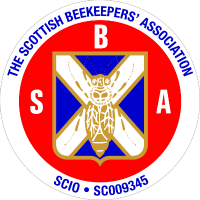Top 3 tips for beekeepers
Beekeeping is a rising hobby and enterprise in Scotland, with around 2000 hobby beekeepers who operate typically one to a dozen hives, and about 25 commercial and 50 semi-commercial bee farmers who manage up to several hundred hives, the interest in beekeeping is gaining more and more importance in Scottish land use.
If you are a new beekeeper or you are thinking about being a beekeeper, we have collected the 3 top tips to get you started.
We have also listed the key action points for improving habitats and resources for bees on your farm, croft, or garden. This is of great importance not only for beekeepers and bee farmers, but also for landowners, farmers, crofters, or neighbours as everyone can contribute to create bee-friendly environments, habitats and resources for bees and other pollinators.

1. Join a local association
Here you will receive advice, network with other beekeeper and bee farmers and get the chance to share and discuss your opinions, practices, and experience. The local associations often also offer training courses and access to more information about and around the topic of beekeeping.
2. Review your location for apiaries
Good sites should include the following features:
- Good source(s) of nectar for all or just some of the active season
- Accessible by vehicle (4×4)

- Away from public rights of way
- Protected from prevailing winds
- Well-drained, free from the risk of flooding
- Away from frost pockets
- Away from deep shade or overhanging trees
- Protected from livestock and other animals
- Not too close to other apiary sites
3. Reduce the risk to honeybees from pesticides
Be aware of neighbouring beehives and where they are situated and to whom they belong.
- Notify bee farmers or beekeepers when you are intending to apply pesticides
- Spray at times when bees are less active, in the early morning, evening or cool cloudy days
- Be aware of other weather conditions when spraying, such as wind direction to avoid possible drift into beehives
Sign up to the FAS newsletter
Receive updates on news, events and publications from Scotland’s Farm Advisory Service

